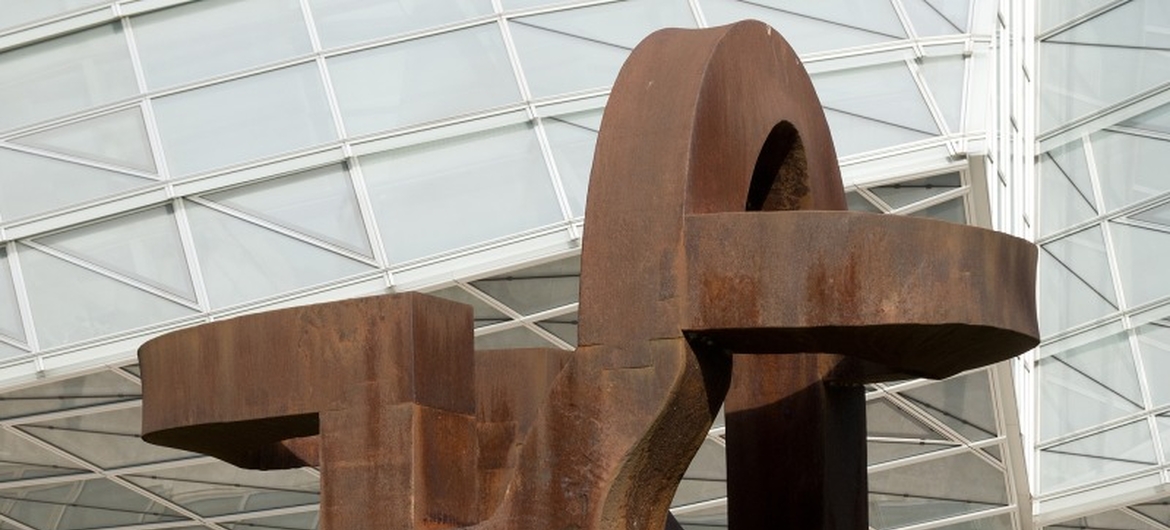Year: 2000
Material/Technique: Corten steel
Estela de Gernika III is a monumental outdoor steel sculpture dedicated to the victims of the Basque town of Guernica, which was bombed by Nazi planes during the Spanish Civil War in 1937. The totemic symbol of the Estela is both conceptually and manifestly central to the artist's output. Estela ("Stele") is the title that Chillida has given to many of his upright standing steel columns and during his lifetime, he created 69 sculptures with this name. A stele is an ancient form, traditionally a column or pillar-like tombstone that marked a gravesite or was erected as a means of paying homage to a person's life and achievements. Although often unspecific to any particular individual, Chillida's stele retain their commemorative nature in the sense that they are vertical metal sculptures which through their verticality and physical articulation of space clearly assert a human presence. The vertical column of the stele indicates the human, for in nature, there are no straight lines; the straight line only exists in the human imagination and through a human's interaction with the world. Like a monument to the human will, Chillida's stelae stand proudly vertical piercing the infinite emptiness surrounding them.
Formed out of steel and executed in 2000 in corten weathering steel that Chillida favored for the creation of all his outside ironworks, Estela de Gernika III has a magnificent patina. It is full of warm earthen tones that radiate from the surface of the majestic sculpture. The sculpture is composed of two columns that connect at the top, bending and turning into curved rings that gracefully meet like the loops of a bow or the touch of two fingertips.
This work is registered in the archives of the Museo Chillida-Leku, under no. 2000.006.
Artist
Eduardo Chillida was a Spanish artist known for his colossal public installations. Working primarily in iron, wood, and steel, Chillida’s interlocking sculptures reflected his interest in space and materiality. Born on January 10, 1924 in San Sebastián, Spain, Chillida studied architecture at the University of Madrid but turned to art and moved to Paris in 1948. Upon returning to Spain in the 1950s, his focus turned toward light, landscape, and spatial concerns. In 1958 he won the Grand International Prize for Sculpture at the Venice Biennale.
In 2000 Chillida opened Chillida Leku, an exhibition space and sculpture park converted from a farmhouse in the town of Hernani, near San Sebastián. Chillida died on August 19, 2002 in his hometown of San Sebastián, Spain at the age of 78. Today, the sculptor’s works are held in the collections of the Art Institute of Chicago, the Guggenheim Bilbao, the Tate Gallery in London, and The Museum Modern Art in New York, among others.
His work combines modern abstraction with traditional artisanal techniques for working materials, in particular forging iron. He frequently made his numerous and celebrated public works from large-format steel, using the material in a bold and spectacular fashion, with utter disregard for its innate constraints. Chillida believed that ‘To construct is to build in space.’
